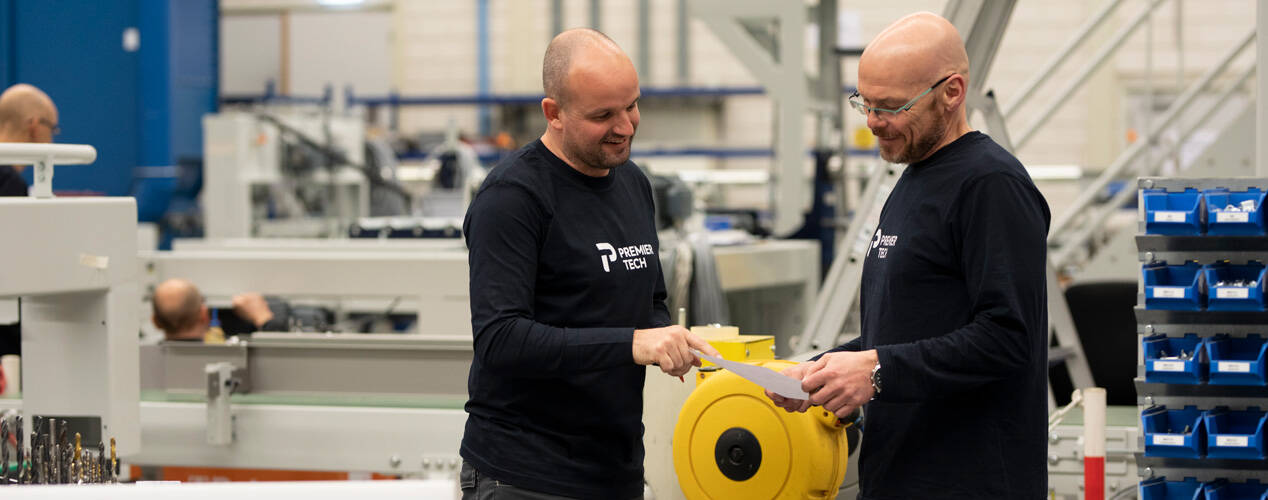Making the Right Choice for Your End-of-Line Packaging Equipment: Retrofit, Rebuild, or Buy New?

The strength of your end-of-line packaging equipment is directly related to the strength of your business. Just think about it: the right machinery can make all the difference for quality control, flexibility and efficiency. So, what happens when your equipment starts to wear down, or industry demands shift? That’s when you might have to choose: will you pursue retrofitting, rebuilding, or are you willing to dish out the money for brand new equipment?
Retrofits, rebuilds, and brand new equipment
Here is a brief breakdown of each course of action.
Retrofit
A retrofit involves adding new technology or features to your existing machine. Packaging system retrofitting can improve equipment performance, extend its lifespan, or adapt it to new production requirements. Unlike a rebuild or purchasing new, retrofit equipment focuses on upgrading specific components or systems within the existing machinery.
Rebuild
A rebuild involves disassembling your existing equipment, replacing worn-out or outdated components with new parts, and then reassembling the equipment to restore it to a like-new condition. This process is more comprehensive than a retrofit but less involved than purchasing brand new equipment.
Brand new equipment
Brand new equipment refers to purchasing completely new machinery with the latest technology and improvements in efficiency, reliability, and safety. This option requires a significant investment upfront.
Now, let’s move to specific areas of consideration for each option.
Categories to consider
Cost
Retrofitting is generally the most budget-friendly option. For example, if you need to update a contained control system, such as an HMI retrofit, it costs much less because only the controls are changed, and not the entire machine. The only additional cost to consider is for disassembly.
A rebuild stands in the middle of the range when it comes to cost. Typically, a rebuild costs less than buying new equipment. As a general rule, you should not spend more than around 75% of the cost of new equipment on a rebuild.
Purchasing new equipment rings in as the most expensive option, including the costs of removing old equipment and installing new machinery.
Downtime
If you need to move quickly, retrofits will be your best option. A controls retrofit can take about two weeks for installation from start to finish, whereas safety and mechanical retrofit projects are generally contained within a week.
Rebuilding requires the longest downtime: from two to four weeks.
Finally, new equipment comes in with a moderate amount of downtime. While the new equipment itself can be up and running quickly, replacing old machinery can take a couple of weeks minimum.
Training requirements
In the case of extending the lifespan of your equipment, machine retrofits and rebuilds offer about the same benefits: 10-15+ years, depending on the kind of upgrade you choose.
Alternatively, brand new equipment boasts stronger longevity, lasting 20-50+ years, especially when you consider the availability of future retrofits.
Cleaning and maintenance
Since the basic functionality remains the same, both retrofits and rebuilds only require minor training if any changes have been introduced to your set-up.
On the other hand, extensive training may be required for operators and maintenance staff in the case of all new equipment.
Safety
In every case, whether you choose to retrofit, rebuild, or purchase new, meeting safety standards is not only achievable, but a top priority. Each option allows you to meet the latest safety and regulatory requirements for complete peace of mind.
Here is a quick review of these categories.
| Feature | Retrofit | Rebuild | New equipment |
|---|---|---|---|
| Cost | Lowest | Medium | Highest |
| Downtime | Lowest | Highest | Medium |
| Lifespan extension | 10-15+ years | 10-15+ years | 20-50+ years |
| Training required | Low | Low | Medium |
| Safety compliance | Full | Full | Full |
Making the right choice
You might find that you fit into one of the three scenarios below.
Retrofits are ideal for:
- Improving specific areas of performance
- Adapting machinery to new safety requirements
- Extending the lifespan of useful equipment
- Updating software or hardware that has become obsolete
Rebuilds are ideal for:
- Equipment that is structurally sound but has many worn-out components
- Systems requiring extensive updates to meet new production demands
- Companies looking to extend the life of their equipment without buying all new
Brand new equipment is ideal for:
- Companies with outdated and inefficient equipment
- Expanding production capabilities or adding new product lines
- Ensuring compliance with the latest industry standards and regulations
Final questions to help you decide
If you’re still not sure, consider these questions in your decision-making process.
1. Is budget your biggest constraint?In this case, retrofits are a no-brainer. As the least expensive option, they allow you to improve specific aspects of your equipment without the costs associated with a rebuild or new purchase. Plus, they are fully safety compliant and gain you extended longevity.
2. Is minimizing downtime critical?Retrofits typically result in the least downtime. However, if space permits, installing new equipment before removing the old can essentially eliminate downtime.
3. Are you looking for a short-term or long-term solution?Brand new equipment offers the longest lifespan at 20-50+ years. On the other hand, retrofits or rebuilds can extend the lifespan of your equipment by 10-15+ years.
In sum
Deciding between a retrofit, a rebuild, or new equipment for your end-of-line packaging machinery will depend on your specific needs and long-term goals. Determining your priority, whether it’s budget, longevity, or minimized downtime, will help you make a strong decision for the future of your operations.
In the market for a retrofit?
Retrofitting is an excellent option if you want to integrate new technology into your packaging line or increase efficiency in a cost-effective way. Premier Tech has a full catalogue of retrofits to suit your needs, with new developments continually being added.